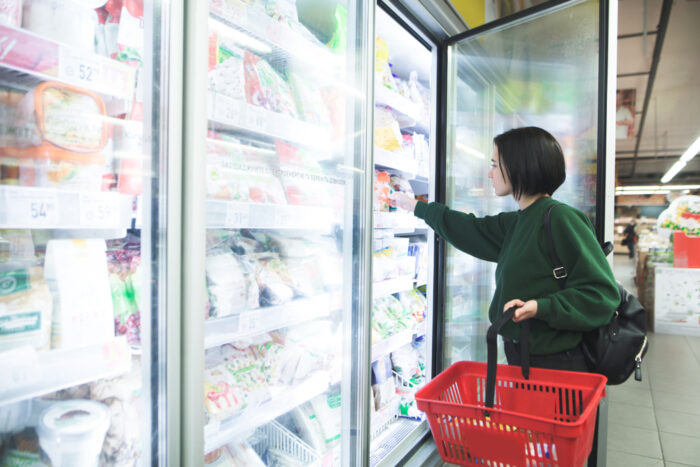Food prices were 8.8% higher in October than a year ago, but the rate of inflation has fallen, from 9.9% in September, an industry body reveals.
This is the sixth month in a row that the rate of food inflation has fallen, and is at its lowest level seen since July 2022. It is also below the three-month average rate of 10.1% in good news for shoppers who have faced higher food prices for the last year.
However, food prices are still rising, though less aggressively than in the past few months.
According to the BRC-NielsenIQ Shop Price Index for October, ambient food inflation, which is measured on a monthly basis, fell to 9.5% from 10.4% the month before.
The rate of inflation for fresh food fell to 8.3%, from 9.6% in September, which again was below the three-month average rate of 9.8%.
Shop price inflation, a rate based on a basket of 500 commonly-bought items, also fell back to from 6.2% to 5.2% which is the lowest level seen since August 2022.
A weaker pound saw costs of imported goods rise, which kept inflation high, while the price of some goods which are produced in the UK fell.
‘Retailers continue to support families’
Helen Dickinson, chief executive of the British Retail Consortium, said: “Shop price inflation eased for the fifth consecutive month to its lowest rate since August 2022.
“Imported goods saw higher levels of inflation due to a weaker pound, still-high producer costs and emerging trade frictions, while prices for some domestically produced foods, such as fruit, were lower compared to last month.
“Prices of children’s and baby clothing also fell as retailers continued to support families as the colder weather descended.”
Non-food inflation was also down, to 3.4% in October from 4.4% in September, the lowest level seen in just over a year, according to the latest BRC-Nielsen Shop Price Index (SPI).
Shoppers have been ‘paying more and buying less’
Mike Watkins, head of retailer and business insight for NielsenIQ, said: “Inflation has helped the topline sales growth of many food retailers this year but in reality, shoppers have been paying more and buying less. And the rest of the retail trade has seen less benefit due to the continued squeeze on discretionary spend.
“This time last year pressure was growing on household incomes as inflation was accelerating in fuel, energy, and food so as inflation continues to decelerate, we now need an uptick in sentiment to help retail sales over the next eight weeks.”
Retailers face a bill of £470m for business rates
The BRC is calling on the Chancellor Jeremy Hunt to address rising business costs in the upcoming Autumn Statement on 22 November.
It said they face a rise of £470m in the cost of business rates if the government doesn’t provide immediate action and this increase will be passed onto consumers.
Dickinson added: “Retailers have been battling to keep prices down for their customers in the face of rising transport costs, high interest rates and other input costs.
“To keep inflation heading in the right direction, it is vital that the Government does not burden businesses with unnecessary new costs. Without immediate action from the Chancellor, retailers have an additional £470m per year on their business rates bill, jeopardising the progress made.
“Ultimately, it’s consumers who would pay the price for the rising rates bill.”

